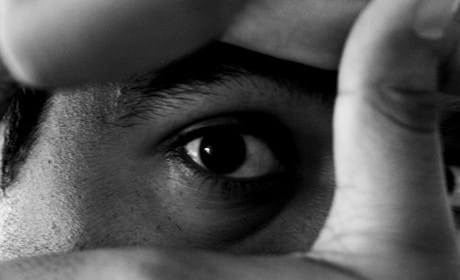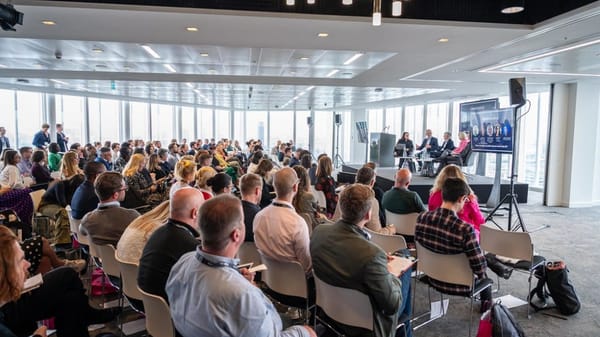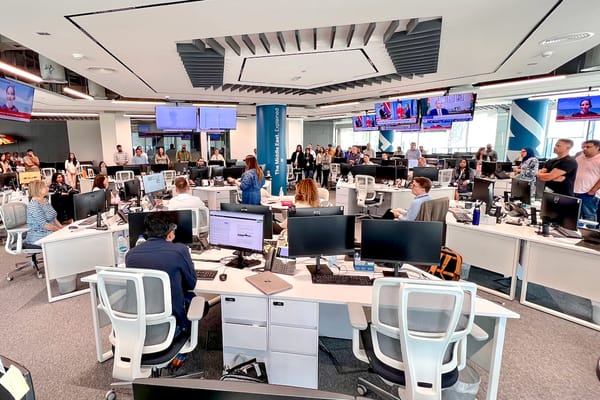This article was migrated from an old version of our website in 2025. As a result, it might have some low-quality images or non-functioning links - if there's any issues you'd like to see fixed, get in touch with us at info@journalism.co.uk.
Eyewitness media has been a gamechanger for journalism in recent years, allowing newsrooms easier access to areas and stories than ever before.
However, with the opportunities that eyewitness media presents also come challenges, noted Claire Wardle at the News Xchange conference in Prague.
Wardle is the co-author of a Tow Center report, published earlier this year , which analysed how news outlets are incorporating user-generated content into their output.
The report found that eyewitness media was used daily by the eight news outlets involved in the study (BBC World, CNN International, Euronews, France 24, Al Jazeera, Al Jazeera English, NHK World and NTN24).
However, the report highlighted issues around proper labelling and crediting for this kind of content.
Below are eight pieces of advice for news outlets using eyewitness media following a panel discussion on the subject and an ensuing workshop.
Duty of care to content uploaders
It perhaps goes without saying that newsrooms should take precautions not to put the people who are posting content at risk, inadvertently or otherwise, when seeking submissions of photos or video around breaking stories.
Caroline Bannock, UGC coordinator at GuardianWitness, said the team members sometimes find themselves in situations where they "tell people not to send us stuff" because they do not want to put them at risk.
"All the time we're spending every day deciding whether it's a good idea to use these people, or not use these people," she added.
Duty of care to journalists
One of the issues highlighted by the Tow Centre report was vicarious trauma in journalists viewing graphic or disturbing eyewitness media repeatedly and often over long periods of time. Deborah Rayner , senior vice president of international newsgathering at CNN, said she had been struck by "the number of people in our newsrooms or on newsdesks that are watching and assessing this kind of material with real intensity... throughout their shifts".
She added that CNN's UGC platform iReport has been running for eight years and so has "quite established protocols" when it comes to processing eyewitness media.
This extends to employee-assisted programs and psychologists for members of the newsroom involved in sourcing and verifying this kind of content.
Remember the 'three Cs'
Aine Kerr , managing editor, Storyful, noted that there is a "wild west" situation surrounding eyewitness media, with a sense of ambiguity around the legal issues of how to properly label and credit uploaders.
At Storyful, Kerr said that in conversations with content uploaders the team tries to abide by the "three Cs" – courtesy, consultation and compensation.
Courtesy refers to requesting to use the content posted in the first place, whereas consultation involves a discussion about how and where the content will be used, for example, and whether it will be monetised or not.
Compensation only applies to "a minority" of cases, said Kerr, adding that "these tend to be the big viral video of the day".
If permission to use content is granted via Twitter or any other social network, Kerr advised outlets to screengrab that permission in case the post is later altered or deleted.
Storyful's Facebook newswire and Google+ newsroom were launched in part to ensure uploaders were properly credited and to advise newsrooms of best practice.
Consider phrasing of content requests
GuardianWitness asks people to 'share' rather than 'send' content, said Bannock, because they do not want to come across as commanding – and therefore assuming responsibility – for their users' action.
"I know it doesn't sound like a big difference, but we think it is," she said.
Don't make assumptions
Journalists should never assume that the person who uploaded the content online is also the person who originally created it.
This is something Storyful is finding "day in, day out," said Kerr, citing as an example a recent viral video which was filmed on cameraphone by one person, posted to Facebook by a friend and uploaded to YouTube by yet another person.
Verify, verify, verify
Along with increased use of eyewitness media comes an equal responsibility to ensure authenticity.
Where possible, one of the best ways to verify information is to speak to the uploader, said Bannock.
"Everyone says verification is very hard," said Bannock. "It kind of isn't really. It's journalism. You just get on the phone, and you speak to them."
In situations where it might not be possible, or safe, to contact the uploader, Kerr highlighted verification techniques used by Storyful such as cross-referencing distinctive buildings or landmarks with open-source maps and photographs already online, some of which are detailed in this recent Journalism.co.uk article .
Credit properly
In UK law there is some flexibility about how you credit the author, whether you use their full name or their social handle, said Adam Rendle , media and sports lawyer, Taylor Wessing LLP.
So instagram/jsmith75 is just as acceptable as instagram/John Smith.
However, in cases where it it is impossible to identify the poster due to issues of ethics or safety, a judge in a copyright case is likely to be lenient, said Rendle.
Newsrooms need to credit the uploader every time their content is used.
Understand how fair dealing works
For many European states, proper crediting is "absolutely fundamental" for fair dealing to apply, said Rendle.
He explained that though fair dealing might apply "in that very instant" when a piece of eyewitness media is newsworthy – within a "24-hour, 48-hour period" – fair dealing no longer applies when that piece of content is syndicated or becomes archive material.
With regards to permission requests to use eyewitness media, "that conversation doesn't end five minutes after the picture's been uploaded," said Rendle, adding that it is important for the discussion to be revisited.
Privacy
"Every photo is a private moment," said Rendle. If a newsroom wants to use photos and videos from social media they should always contact the person who posted it to check if they are the copyright holder (whether they took the photo or video) and ask for permission to use it.
Join the discussion
Earlier this year Wardle launched a project, now called the Eyewitness Media Hub, designed to "bring together and create resources" to support anyone using eyewitness media.
Users can sign-up to the Storyful-funded project at eyewitnessmediahub.com





